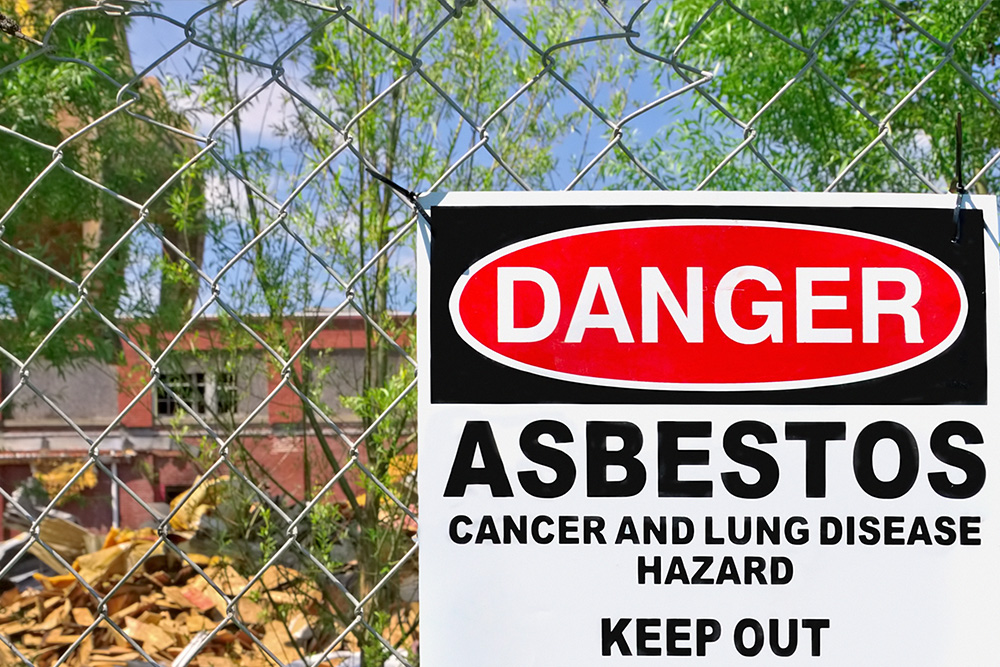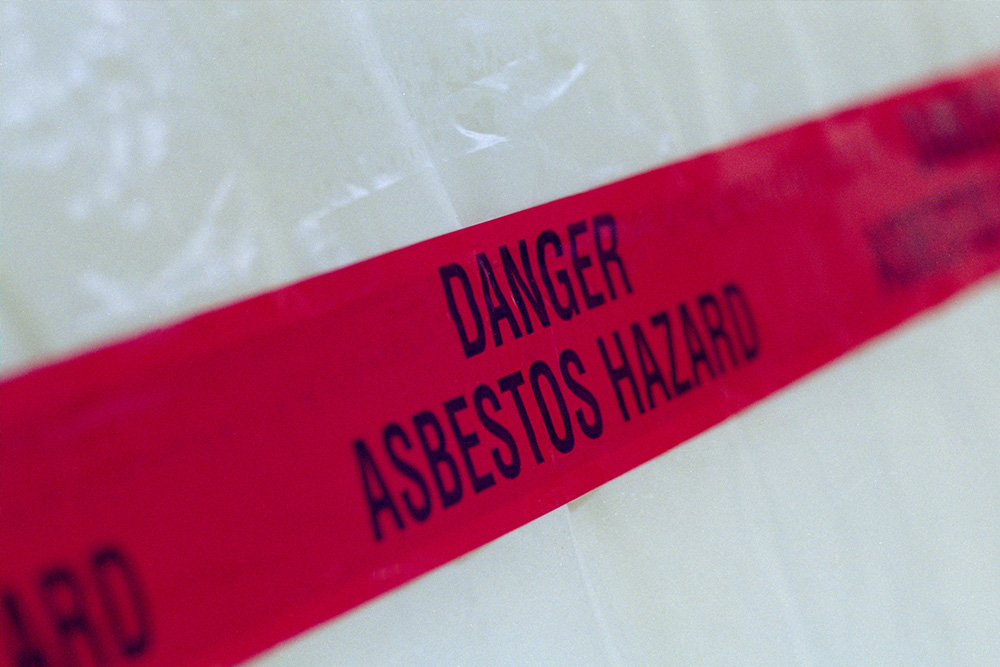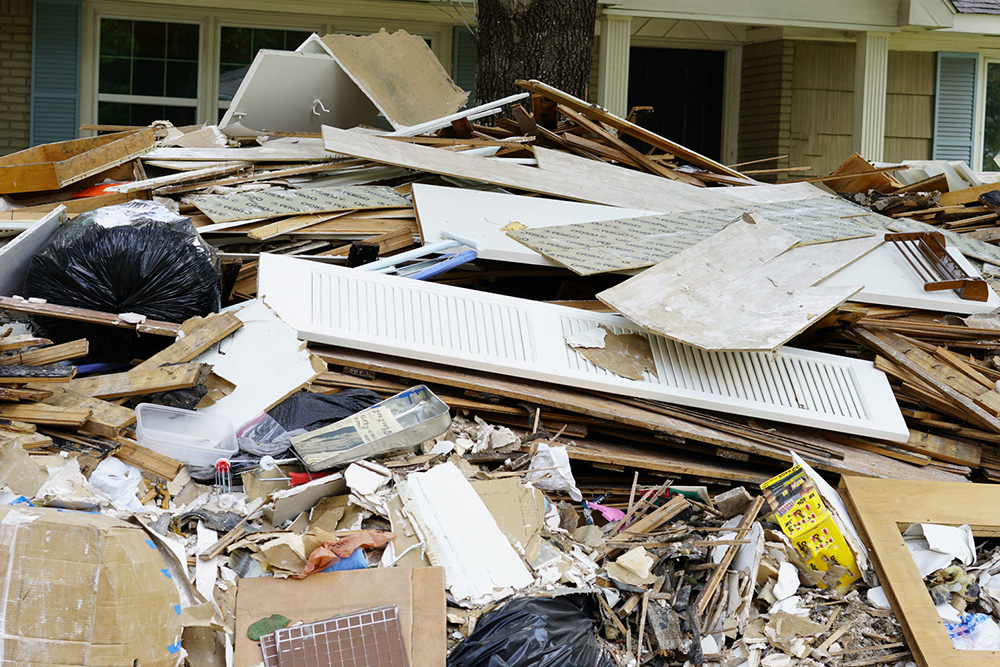The stories about the dangers of asbestos exposure are horrifying and all too common: mesothelioma, lung, laryngeal and ovarian cancer, and ultimately death. But despite the well-known risks of the dangerous and deadly carcinogenic fibers, the United States still has not banned asbestos.
While dozens of other countries have outlawed asbestos, the United States allows hundreds of tons each year from Brazil to benefit two major chemical companies, OxyChem and Olin Corp. The companies say asbestos is crucial to chlorine production and that their protocols for handling it keep workers safe from exposure. But those workers claim otherwise.
More than a dozen former workers from OxyChem’s plant in Niagara Falls, New York, told ProPublica that asbestos dust hung in the air, collected on the beams and light fixtures and built up inches thick. Workers often were without protective suits or masks and the dust collected on their coveralls and boots.
The Environmental Protection Agency and Congress accepted the companies’ claims that workers were safe. The Occupational Safety and Health Administration let the companies into a special program that limited the frequency of inspections at their plants, ProPublica reported.
OxyChem declined ProPublica’s requests for an interview. The company said in a statement to ProPublica that it complies with federal regulations on asbestos and that workers who handle it are “trained, work in restricted areas of our plant, protected by personal protective equipment and are offered annual medical examinations.” The company also said it allows employees to stop work if they feel unsafe.
“The health and safety of every plant worker and the people in our surrounding communities is our top priority,” the company said.
Olin did not respond to calls and emails that ProPublica said it sent over the course of a month.
The former workers agreed to hours of interviews with ProPublica and recounted “ever-present asbestos dust with scant protection.”
Federal workplace safety standards require keeping asbestos fibers wet to prevent them from going airborne, having workers wear protective equipment and containing the asbestos inside certain areas. OxyChem had rules in place, but the protocols failed to match reality at the Niagara Falls plant, according to more than a dozen workers who spoke to ProPublica.
Tanks of chlorine, caustic soda and hydrogen contained metal screens coated with layers of asbestos to keep the chemicals apart. When screens needed to be recoated, OxyChem workers used pressure washers, splattering asbestos everywhere. Then, they dipped the clean screen into a wet mixture containing new asbestos and cooked it in an oven until the asbestos hardened. They worked on one or two screens each day.
Asbestos wasn’t a problem when it was wet, but it would dry overnight. The next morning, the workers told ProPublica, it would be stuck to the ceiling and the walls. Clumps would roll across the floor and floating particles could be seen in the air.
There was so much asbestos in the cell-maintenance building that it was impossible to keep it all wet, said Robert Cheff, who worked at the plant from 1981 to 2007. “We were constantly swimming in this stuff.”
Workers wore protective gear for certain tasks, like pressure washing and screen dipping. But they went into the building to carry out other tasks without special suits or anything protecting their faces, despite company requirements. One worker said managers enforced those rules. But a dozen others interviewed by ProPublica recalled that the bosses looked the other way.
The stories shocked six experts in industrial hygiene and occupational health who were consulted by ProPublica.
“Totally unacceptable,” said Rachael Jones, professor and chair of the Environmental Health Sciences Department at the University of California, Los Angeles.
“Fraught with danger,” said Dr. Philip Landrigan, a public health physician trained in occupational medicine and epidemiology who leads Boston College’s program for Global Public Health and the Common Good.
Workers with a high risk of exposure sometimes clipped a small monitor to their bodies to measure the amount of asbestos in the air around them. At least five times in 2001 and 2002, the levels around Patrick Nowak exceeded OSHA’s exposure limit, ProPublica said his company records show. “I failed so many times, they quit testing me,” he said.
Tony Garfalo wore a monitor seven times in 2001, and, on four occasions, the results exceeded OSHA’s limit, his records show. Once, the asbestos level was more than five times the allowable limit.
Under the Biden administration, the EPA determined that all workers in asbestos-dependent chlorine plants faced an “unreasonable risk” of getting sick from it, citing a review of the companies’ own exposure-monitoring data. EPA Administrator Michael Regan proposed a ban for the first time in more than three decades. But it could be months before the rule is finalized and the chemical industry has vowed to fight it.
How We Help Victims of Asbestos Exposure
Seek justice with the help of our experienced asbestos attorneys. Our asbestos law firm has represented individuals like you affected by asbestos exposure for over 20 years, aggressively fighting the corporate giants responsible for their dangerous products. If you or a loved one were exposed to asbestos or suffered from a disease caused by asbestos, like mesothelioma, we can help.










